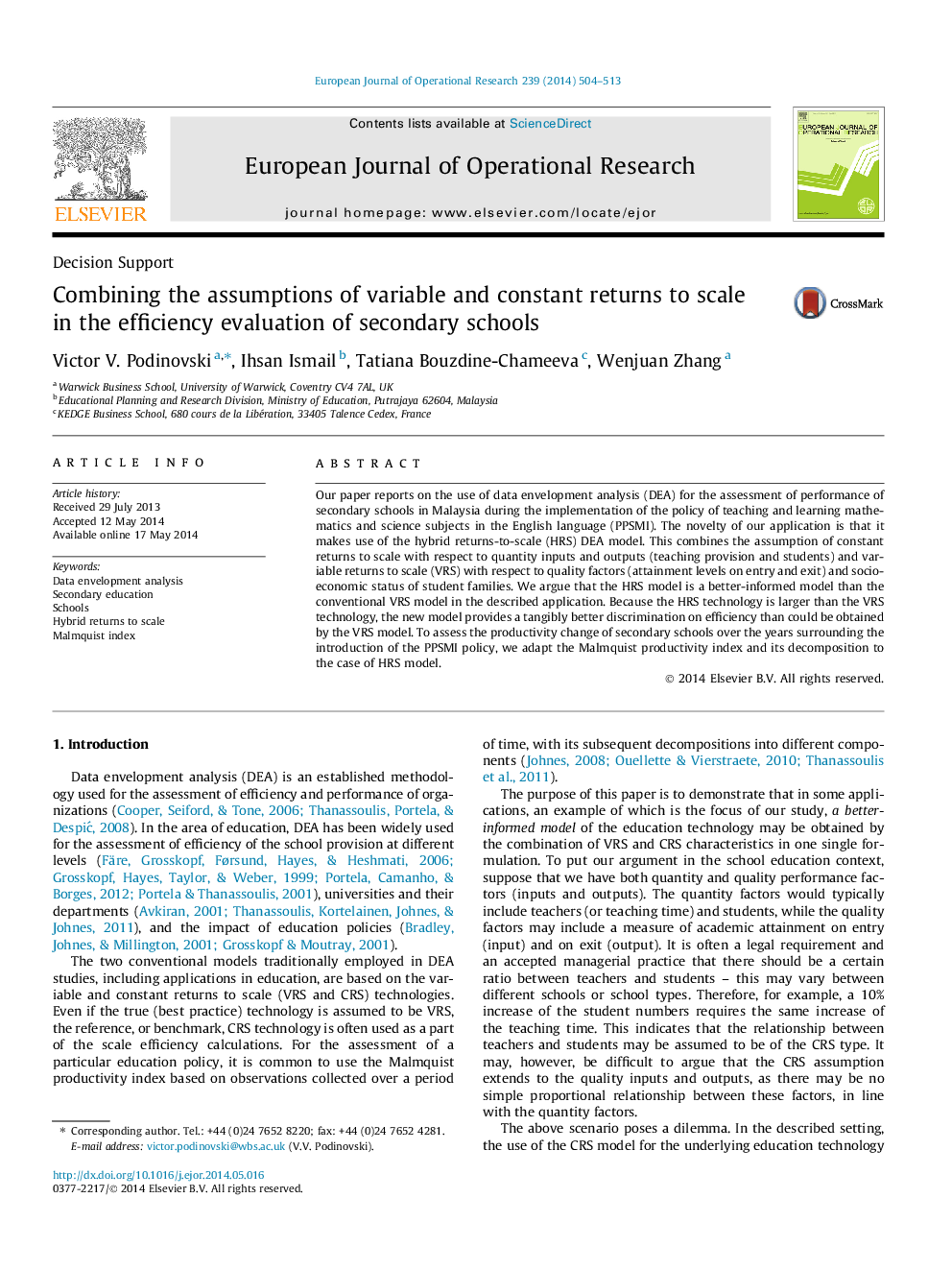| Article ID | Journal | Published Year | Pages | File Type |
|---|---|---|---|---|
| 476650 | European Journal of Operational Research | 2014 | 10 Pages |
•The hybrid returns-to-scale (HRS) DEA model is used to assess school efficiency.•A new and more intuitive statement of the HRS model is developed.•The Malmquist index of productivity change is extended to the case of HRS model.
Our paper reports on the use of data envelopment analysis (DEA) for the assessment of performance of secondary schools in Malaysia during the implementation of the policy of teaching and learning mathematics and science subjects in the English language (PPSMI). The novelty of our application is that it makes use of the hybrid returns-to-scale (HRS) DEA model. This combines the assumption of constant returns to scale with respect to quantity inputs and outputs (teaching provision and students) and variable returns to scale (VRS) with respect to quality factors (attainment levels on entry and exit) and socio-economic status of student families. We argue that the HRS model is a better-informed model than the conventional VRS model in the described application. Because the HRS technology is larger than the VRS technology, the new model provides a tangibly better discrimination on efficiency than could be obtained by the VRS model. To assess the productivity change of secondary schools over the years surrounding the introduction of the PPSMI policy, we adapt the Malmquist productivity index and its decomposition to the case of HRS model.
